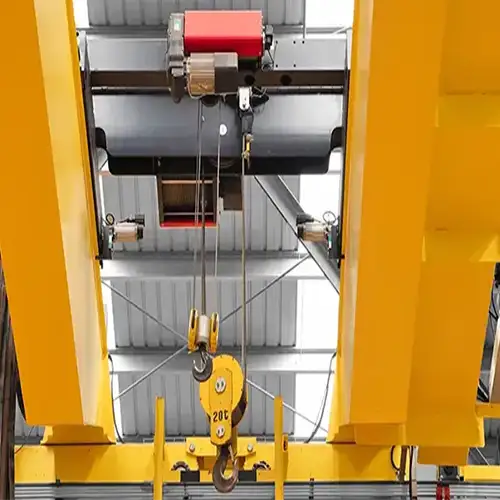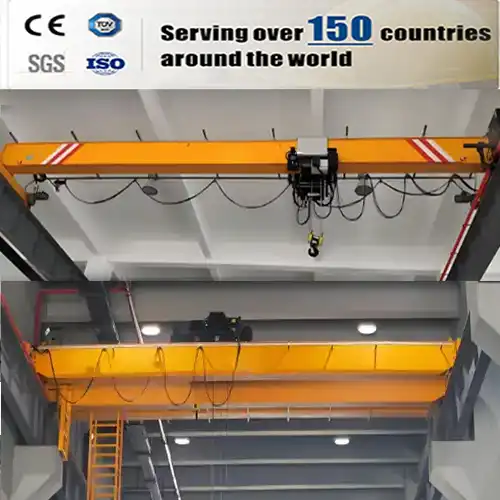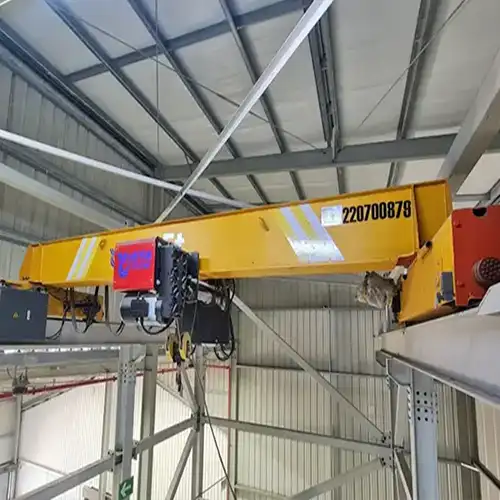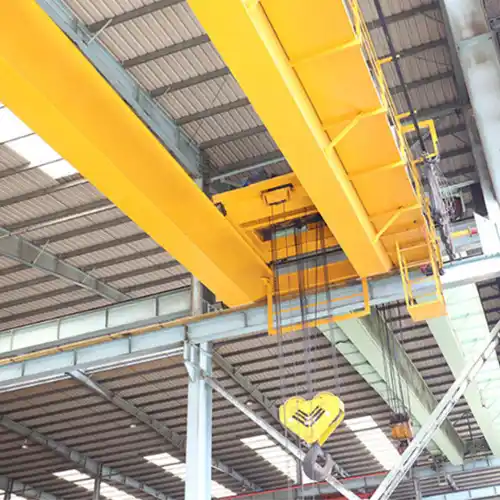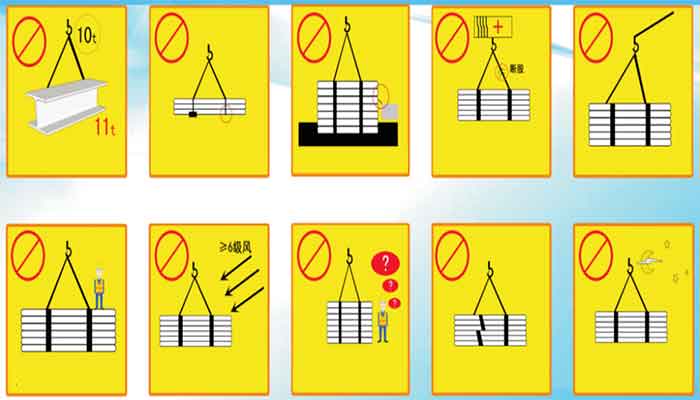
Material Handling & Overhead Crane Hazard Analyses
What Is Material Handling Hazard Analysis?
A material handling hazard analysis is frequently carried out by companies to identify appropriate work guidelines and procedures. Employers and employees can concentrate on specific material handling tasks and detect potential hazards using the analytical technique. The material handling hazard analysis is anticipated to concentrate on the relationship between worker and material handling tasks.
To complete a full material handling hazard analysis, various aspects of the material handling process itself must be examined. The hoist and crane equipment needed to complete the material handling, the workspace in which it occurs, and the actual task(s) that must be accomplished by each participant are just a few examples of these aspects. You can do extensive material handling hazard analyses and, as a result, keep your personnel safe every day, if you are aware of all the aspects of each material handling process.
The material handling hazard analysis is only one part of a successful safety and health management system, which is critical to the health and well-being of workers performing their daily tasks as well as the employees who must work around them.
To conduct an effective material handling hazard analysis, you must first understand what a hazard is. A hazard is anything that has the potential to cause harm. OSHA defines workplace hazards as any condition or activity that, if not controlled, can result in an injury or diseases. When conducting a material handling hazard analysis, the ultimate goal is to eliminate or control potential hazards.
What’s the Purpose of Material Handling Hazard Analysis?
The material handling hazard analysis is only one part of a successful safety and health management system, which is critical to the health and well-being of workers performing their daily tasks as well as the employees who must work around them.
To conduct an effective material handling hazard analysis, you must first understand what a hazard is. A hazard is anything that has the potential to cause harm. OSHA defines workplace hazards as any condition or activity that, if not controlled, can result in an injury or diseases. When conducting a material handling hazard analysis, the ultimate goal is to eliminate or control potential hazards.
A hazard analysis's goal is to identify any potential risks associated with material handling in order to help eliminate and prevent dangerous situations. It is likely that safer, more efficient work procedures will be achieved if a thorough material handling hazard analysis is carried out and workers are appropriately trained to know which dangers to look for and how to control them. Effective work procedures will save workers' compensation costs, control worker injuries, and boost employee efficiency. Material handling hazard studies are also useful in teaching new personnel to perform material handling safely and effectively. Management must demonstrate its dedication to safety and health after a material handling hazard study is finished by promptly eliminating any uncontrolled hazards.
Which Material Handling Are Appropriate for A material handling Hazard Analysis?
An extensive range of material handling and activities can be covered by a material handling hazard analysis, as we discussed previously. In actuality, they ought to be utilized in any action that might endanger the lives or safety of those involved. For instance, staff members who oversee a public pool are required to perform an activity hazard analysis to identify potential risks to visitors who are utilizing their facility. After the analysis is over, management should develop a set of rules and regulations for both the staff and the visitors swimming on the property.
- A material handling hazard analysis is not limited to a single industry or business. It rather applies to any workplace where potentially hazardous materials are handled. Priority should be given to the following types of material handling, according to OSHA's hazard prevention training program:
- Material handling has the highest rate of injury or illness.
- Material handling with the potential to cause severe or disabling injuries or illness, even if no previous accidents have occurred;
- Material handling, in which a single human error could result in a serious accident or injury;
- Material handling that is new to your operation or has changed in processes and procedures; and material handling that is complex enough to necessitate written instructions.
Many of the aforementioned requirements are met by working near or with overhead cranes. There are numerous potential hazards for overhead crane operators and other workers who operate close to moving cranes that, if not controlled, could cause death or serious harm.
What About Analyses of Overhead Crane Hazards?
So how can we successfully identify and document overhead crane dangers and risks as part of a material handling hazard analysis? Employees and managers frequently need to ask themselves a number of crucial questions before they can start documenting potential risks and solutions. Employers who need to conduct a material handling might use OSHA's list of examination courses as a starting point. The objective is to respond to the following questions in order to complete a thorough and accurate material handling hazard analysis for overhead crane operators:
- What could possibly go wrong?
- What are the ramifications?
- How did it happen?
- What other factors play a role?
- What is the possibility that the hazard will occur?
Once you've established a course of investigation, it's critical to thoroughly and consistently document the answers to these questions.
OSHA provides the following detailed hazard scenarios:
- Where it is taking place (environment),
- Who or what is being affected (exposure),
- What causes the danger? (trigger),
- The result that would happen if it occurred (consequence), and
- Any more influencing elements.
How to Identify Crane Hazards
We must consider numerous contributing aspects that cause potential dangers in order to detect potential hazards in a workplace where overhead cranes are frequently employed. In actuality, one single cause rarely leads to one single impact, according to OSHA. That requires us to consider every component of the material handling equipment and how it might result in a potential accident or tragedy.
An illustration of a typical safety risk for operators of overhead cranes:
- Environment: A facility that produces tools and offers services for uses in the worldwide energy sector.
- Trigger: A worker is lifting large objects from a machining center using a bridge crane situated on a workstation that hangs from the ceiling.
- Exposure: The operator wrongly thinks they can use their gut feelings to tell whether the weight is too heavy.
- Consequences: As a result of the crane becoming overloaded, the system is put under additional structural stress, which results in permanent damage. The signal person is abruptly struck by the load as it swings and drops, crushing both of his legs.
BEFORE doing a material handling hazard study, it's crucial to examine the following factors:
- What could possibly go wrong?The operator may overload the bridge crane, stressing its construction and resulting in permanent harm to the machinery. The weight could swing from side to side before descending abruptly to the ground below.
- What are the repercussions?Nearby workers could be crushed by the falling cargo.
- How could this occur? The worker may have relied on instinct and experience to decide if a cargo was too heavy to lift, which could have led to the disaster. Clearly, if the operator was aware of (and adhered to) the load's weight and the crane's capability, this risk scenario could not arise. The risk of overloading and operator incompetence can be significantly reduced by using technology like load-measuring systems for planning and training.
- What are some more contributing factors? This risk happens extremely quickly. Once the crane is overloaded and the weight starts to swing from side to side, the worker does not have much time to stop it or recover. Other contributing factors, such as how quickly the accident might happen, are essential to be aware of since they can help you choose the right hazard controls by determining the severity and likelihood of an accident. Sadly, history has demonstrated that training is not particularly helpful in hazard mitigation when events occur quickly since human reaction times are frequently significantly slower than the trigger.
- How likely is it that the risk will materialize? Some discretion is required in making this decision. The risk of a recurrence would be regarded as high if there have been any "near-misses" or actual cases. The crane operator should also be taken into account. If someone has years of expertise but never received the required training, there is a great chance that a hazard will arise. Operators with more years of experience are more likely to rely on their knowledge of safe practices and danger preventions than to remember training methods. The procedures in this example will help you plan your hazard analysis tasks.
An crucial component of crane and hoist operations is the consideration of material handling hazards. In order to identify potential dangers and choose preventative steps to mitigate such hazards, a thorough and precise material handling hazard analysis must be conducted.
What actions ought to be taken to detect hazards and stop them from happening?
It will be easier for you to document your material handling hazard analysis for each unique material handling in your facility if you choose the material handling to be analyzed, break it down into a specific sequence of steps, identify potential hazards, and decide preventative measures to overcome those hazards. This written document acts as both a teaching aid for material handling training and a reminder to the user of the risks involved with using the equipment.
Here is an illustration of how to finish a material handling hazard analysis:
- Choosing the material handling that will be examined:Materials are being moved by a crane near or underneath live electrical lines.
- Divide the material handling process into the following steps:The crane operator relies on a signaler or worker below to guide the load past or underneath electricity lines; the operator steers the load using hand signals from the worker below. The load is moved near or below the electrical wires under the operator's supervision.
Finding potential dangers
The worker gives an unclear indication, or the operator ignores the worker's hand signals completely;When operating close to or around energized power lines, the operator is not trained to follow safety precautions;The crane's motion or the load's direction are not being observed by the signaler.
Taking precautionary measures to reduce these risks:
In order to stay out of risk areas where electrocution could happen, operators and personnel must acquire the proper training.When it is challenging to maintain the required clearance visually, operators should have colleagues watching nearby to help them.Make sure all ladders, equipment, and systems are non-conductive, and whenever employees are working close to power lines, ask the electric company to ground the lines, de-energize them, or build insulation.
The rules and guidelines set forth by OSHA and ANSI covering the usage, maintenance, and inspection of overhead cranes should be understood and followed by anybody involved in crane and hoist operations. Any material handling hazard study should begin by reviewing these rules and regulations. Even yet, OSHA and ANSI criteria might not be sufficient in and of themselves to provide a complete and accurate material handling ananlysis. Before specific duties can be defined and preventative measures can be implemented, it's also crucial to study and comprehend the literature and instructions provided by the crane manufacturer.
